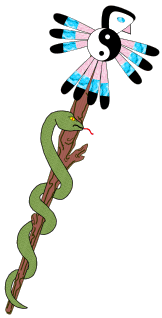OVERVIEW
Copper, a vital mineral for proper metabolism, can be toxic at higher doses. Overconsumption can lead to severe health issues, even death.
Copper interacts with zinc, so taking too much copper can result in a functional zinc deficiency and vice versa.
Note that copper is relatively plentiful in Arizona soil and water; hence, zinc deficiency is more likely than copper deficiency. However, the best plan is to "test, don't guess."
Consult with a health care provider trained in biochemistry and nutrition, such as Dr. Weyrich, to optimize your copper and zinc balance in the body.
For more information, please see [Gaby2011, pg 159b] [Marz1999, pg 125]
SYMPTOMS OF DEFICIENCY
According to [Gaby2011, pp 159-162], dietary deficiency of copper can manifest as:
- Increased inflammation (enzyme superoxide dismutase)
- Bone and connective tissue disorders, poor wound healing (enzyme lysyl oxidase)
- Impaired immune function
- Anemia
- Glucose intolerance
- Heart disorders
- Disordered thyroid function [Jain2014 🕮 ]
- Premature hair greying [El-Sheikh2018 🕮 ]
- Neurological problems
![Go to [Wiki]](../images/earth_hover.gif) [Wiki]
[Wiki]
SYMPTOMS OF EXCESS
According to [Gaby2011, pp 160-162], copper toxicity can result from passing acidic drinking water through copper pipes or cooking in copper vessels. This toxicity manifests as liver disease.
DOSAGE
- Recommended Dietary Allowance (Adults): 0.9mg/day
- Tolerable Maximum Dose: 10mg/day
- Typical USA Daily Intake: 1.2 to 1.7mg/day
TESTING
According to [Gaby2011, pg 160], there is no reliable test for mild copper deficiency; moderate or severe deficiency may be reflected in low ceruloplasmin or serum copper levels. However, it is important to note that ceruloplasmin levels can be elevated due to inflammation, as it is an acute-phase reactant. [Gaby2011, pg 160a] states that hair analysis does not reflect copper nutritional status.
Dr. Weyrich believes that the SpectraCell Comprehensive Micronutrient Test and the Red Blood Cell (Erythrocyte) Mineral Panel may be reliable measures of functional copper status, but is is unaware of any supporting clinical evidence.
SOURCES
Below are some foods with good copper content
![Go to [WebMD]](../images/earth_hover.gif) [WebMD].
However, different authorities vary significantly in their reported values.
There is concern that modern
agricultural practices are causing a general decline in the nutritional content of the food supply).
[WebMD].
However, different authorities vary significantly in their reported values.
There is concern that modern
agricultural practices are causing a general decline in the nutritional content of the food supply).
- Organ meats: 4 ounces of beef liver has 16mg of copper; Chicken liver has 0.6mg.
- Shellfish: 100 grams of cooked oysters have 4.8mg of copper; cooked crab contains 0.7mg.
- Dark chocolate: 100 grams of 70%-85% dark chocolate has 1.8mg of copper.
- Mushrooms: 1 cup of cooked shiitake, portobello, or button mushrooms have about 1.2mg of copper.
- Whole grains: 0.5 cup rye has 0.9mg of copper.
- Legumes: 0.5 cup of dried beans has 0.9mg copper.
- Nuts: 1 ounce (18) cashew nuts have 0.6mg of copper.
- Potatoes: a medium-sized baked potato contains 0.6mg of copper.
- Blackstrap molasses: 2 T has 0.6mg of copper.
- Seeds: 1 ounce sunflower seeds has 0.5mg of copper.
- Soy: 100 grams of Tofu has 0.4mg of copper.
REFERENCES
-
[El-Sheikh2018] Alshimaa M El-Sheikh, Nashwa N Elfar, Heba A Mourad, El-Sayed S Hewedy. Relationship between Trace Elements and Premature Hair Graying. Int J Trichology. 2018 Nov-Dec;10(6):278-283. PMID:
 30783336 DOI:
30783336 DOI:  10.4103/ijt.ijt_8_18 PCMID:
10.4103/ijt.ijt_8_18 PCMID:  PMC6369637
[Gaby2011] Alan R. Gaby. Nutritional Medicine. Concord, NH: Fritz Perlberg Publishing (2011).
PMC6369637
[Gaby2011] Alan R. Gaby. Nutritional Medicine. Concord, NH: Fritz Perlberg Publishing (2011). Amazon
[Jain2014] Ram B Jain. Thyroid function and serum copper, selenium, and zinc in general U.S. population. Biol Trace Elem Res. 2014 Jun;159(1-3):87-98. PMID:
Amazon
[Jain2014] Ram B Jain. Thyroid function and serum copper, selenium, and zinc in general U.S. population. Biol Trace Elem Res. 2014 Jun;159(1-3):87-98. PMID: 24789479 DOI:
24789479 DOI:  10.1007/s12011-014-9992-9
10.1007/s12011-014-9992-9  PAYWALL
[Marz1999] Russell B Marz. Medical Nutrition from Marz, Second Edition. Portland, OR: Omni-Press (1999).
PAYWALL
[Marz1999] Russell B Marz. Medical Nutrition from Marz, Second Edition. Portland, OR: Omni-Press (1999). Amazon
Amazon






